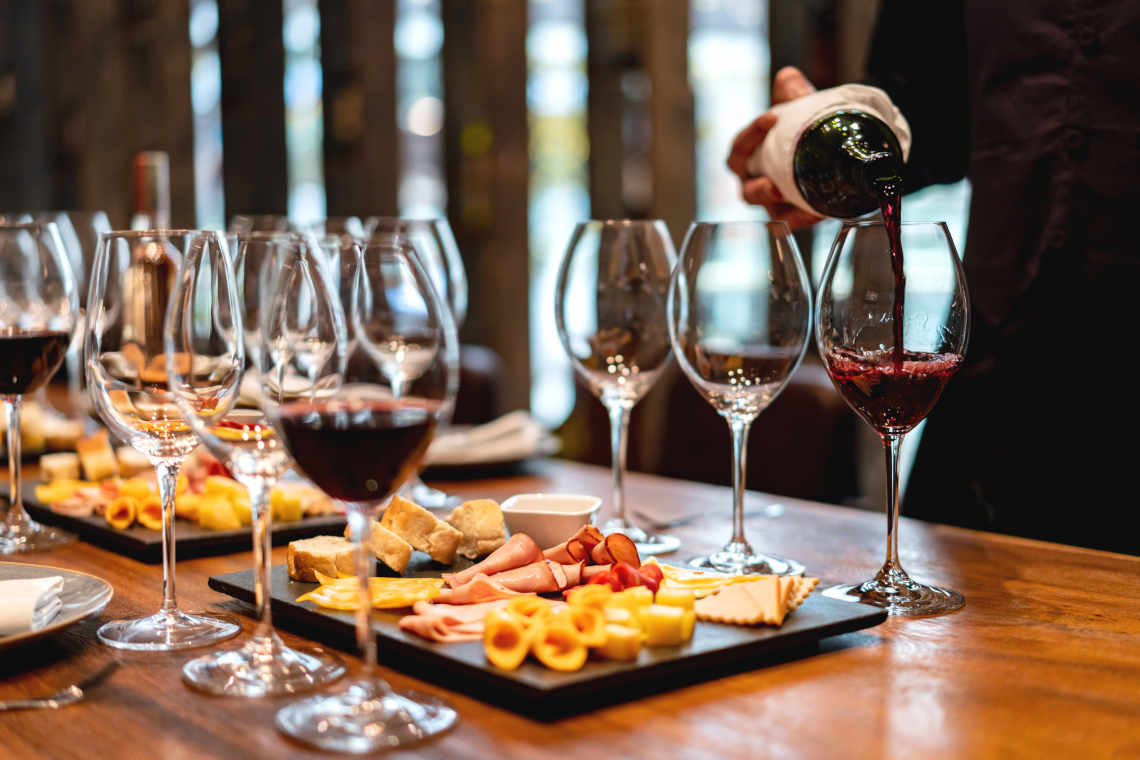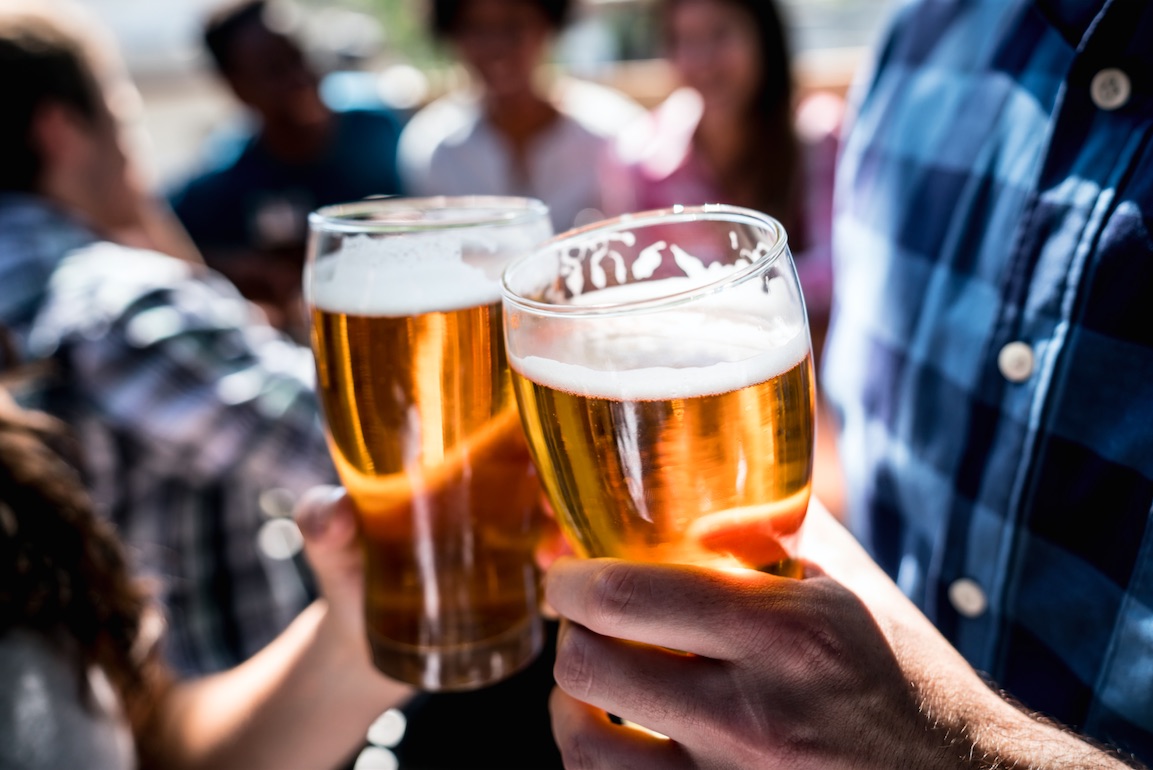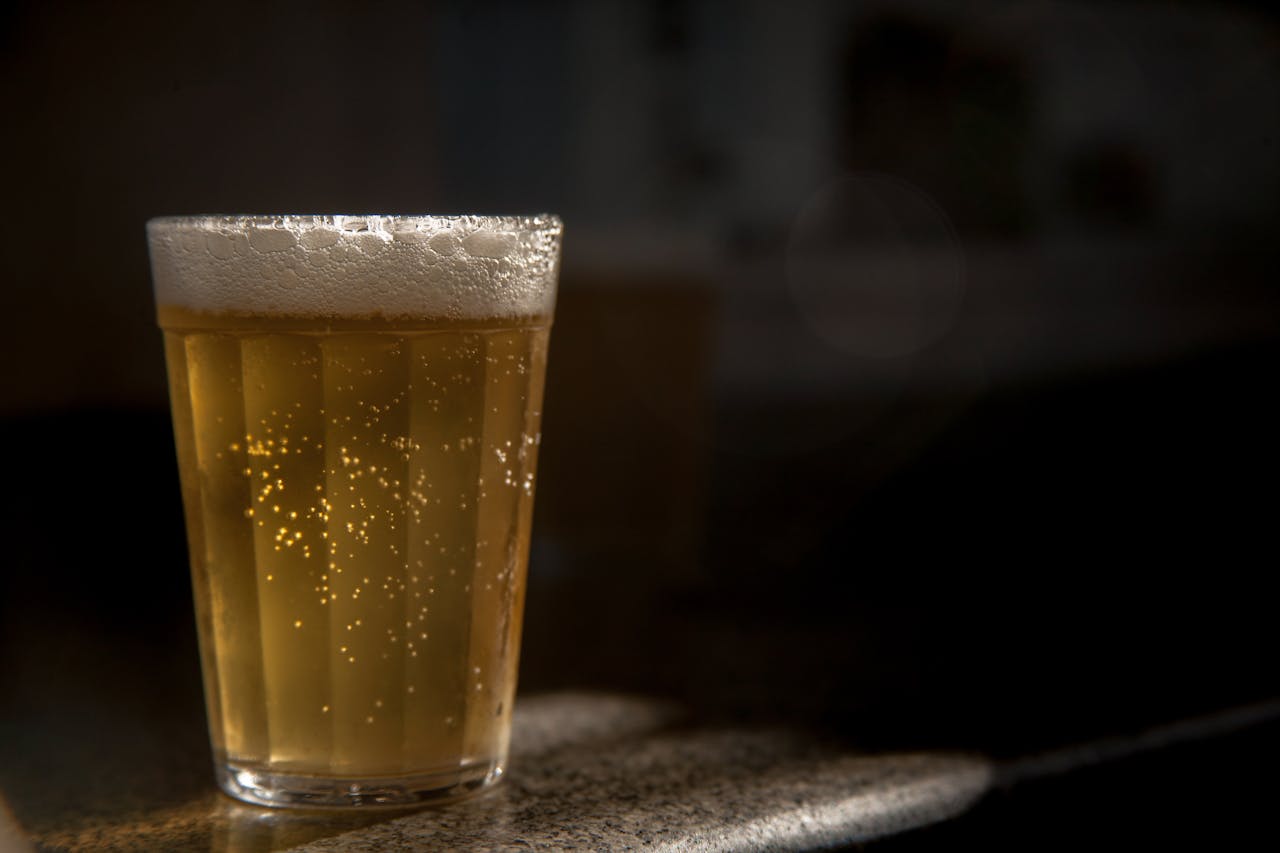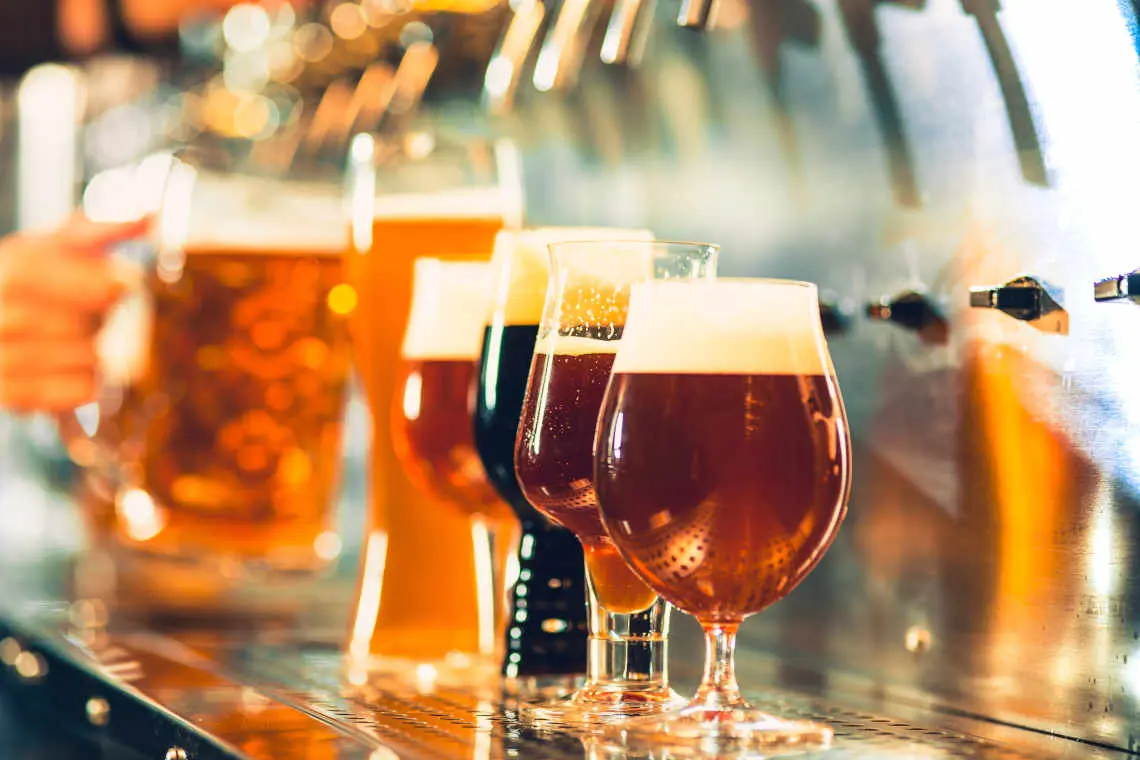酒精味覺測試

酒精味覺測試在飲料行業中起著至關重要的作用。它確保風味特徵的一致性,識別缺陷或異味,並指導開發滿足消費者偏好的新產品。
品牌如何確保其酒精飲料脫穎而出並始終滿足鑑賞家和休閒飲酒者的高期望?創造完美酒精飲料的工藝和科學是一門藝術,而酒精口味測試為市場成功奠定了基礎,確保每一口都能為消費者帶來發現和愉悅的旅程。
什麼是酒精味覺測試?
酒精味道測試是對定義酒精飲料的複雜風味特徵、香氣和質地的深入分析。它評估飲料的品質、特性和吸引力,從葡萄酒和烈酒到啤酒和雞尾酒。
此口味測試評估酒精飲料(包括葡萄酒、啤酒和烈酒)的感官特徵。它涉及評估外觀、香氣、味道和口感,以確定飲料的品質和特性。
在酒精味道測試過程中,受過訓練的專業人員(被稱為「感官小組成員」)利用他們的感官來識別和描述各種飲料屬性,例如果味、酸度、甜味和苦味。這些評估有助於生產商了解消費者對其產品的看法,並就產品開發和品質控製做出明智的決策。
為什麼企業需要酒精味覺測試?

酒精味道測試對於確保產品品質和一致性至關重要。它使生產商能夠識別差異並做出必要的調整,以確保到達消費者手中的每件產品都保持品牌的品質標準。這種一致性對於建立和維持消費者的信任和忠誠度至關重要,因為客戶希望每次購買都能獲得相同的體驗。
此外,酒精口味測試有助於創新和差異化,因為生產商可以嘗試新的口味、混合物以及釀造或蒸餾技術,以創造出吸引市場興趣的創新產品。對於尋求引領而不是追隨市場趨勢的品牌來說,這種探索和完善的過程至關重要。
此外,酒精味道測試可以提供有關消費者偏好的寶貴見解,使品牌能夠客製化產品以滿足目標受眾不斷變化的口味。然而,它為企業帶來了許多其他好處,包括:
- 批次間的一致性: 酒精味道測試使品牌能夠密切監控變化並調整其方法,以確保消費者獲得一致的產品體驗。
- 市場差異化: 透過酒精口味測試,品牌可以探索創新的風味組合、生產技術和獨特的成分配置,使其產品與眾不同。
- 符合消費者偏好: 酒精味道測試可以深入了解目標市場的口味和偏好,使品牌能夠客製化產品以滿足這些期望。
- 增強的品牌敘事: 透過酒精口味測試發現的細微差別和品質可以豐富品牌的敘述,使其能夠講述一個關於其傳統、工藝和對品質的承諾的更引人注目的故事。
誰使用酒精味覺測試
這 生產烈酒、啤酒和其他酒精飲料的工匠 是酒精味覺測試的主要使用者。對於這些專業人士來說,該流程對於確保其產品的品質和一致性至關重要。 蒸餾器和啤酒廠 也利用口味測試來完善配方、調整發酵和蒸餾工藝,並確保每批產品都符合嚴格的風味、香氣和口感標準。
侍酒師與調酒師 依靠酒精味覺測試來加深對不同飲料以及如何組合或呈現它們以增強飲酒體驗的理解。這些專業人士利用他們精緻的味覺為餐廳、酒吧和活動策劃選擇,確保每項服務都是高品質的,並且適合目標受眾或主題。
在較大的飲料公司中, 品質控制分析師 在生產過程中進行酒精味道測試,以確保每件產品都符合品牌的品質標準。這些分析師尋找任何可能表明生產過程存在問題的味道、香氣或外觀的偏差,有助於防止不合格的產品進入市場。
何時進行酒精味覺測試

確定進行酒精口味測試的最佳時機對於在產品開發、行銷和品質保證的不同階段最大化其效益至關重要。這種策略時機確保了從測試過程中獲得的見解既相關又可操作——以下是酒精味道測試尤為重要的關鍵實例的細分:
- 產品發布前: 在推出新產品之前進行酒精口味測試至關重要。這種初步評估使品牌能夠根據專家和消費者的回饋來完善其產品,確保其滿足市場期望並有很大的成功機會。
- 產品開發期間: 酒精味覺測試在產品開發階段起著至關重要的作用。它使品牌能夠嘗試不同的配方、混合和陳化過程,以評估它們對最終產品風味特徵和整體感官體驗的影響。
- 生產或成分改變後: 每當生產過程或原料來源改變時,酒精味覺測試就變得必要。這些變化會顯著影響最終產品的味道和品質。儘管做出了這些改變,口味測試仍可確保產品仍符合品牌標準和消費者期望。
- 針對消費者的回饋: 如果一個品牌收到重要的消費者回饋或註意到消費者偏好的變化,那麼進行有針對性的酒精口味測試可能會有所幫助。這使得該品牌能夠探索新口味或對其產品進行調整,以更好地符合當前口味,確保其產品保持相關性並吸引受眾。
- 探索並適應市場趨勢: 在探索新的市場趨勢和適應消費者偏好的變化時,酒精風味測試至關重要。隨著飲料產業的發展,要保持領先地位(例如對低酒精或無酒精飲料的興趣日益增長),品牌需要不斷測試和改進其產品,以滿足不斷變化的消費者需求。
無論如何,企業管理者必須問自己以下問題:
- 目的: 口味測試的目標是什麼?是收集新產品的回饋、評估現有產品的品質還是其他?
- 樣本選擇: 樣本是如何選取的?它們會代表一系列口味、風格或品牌嗎?
- 品酒環境: 口味測試將在哪裡進行?環境是否有利於準確品嚐、沒有乾擾、沒有強烈的氣味?
- 品酒師選擇:誰會參加口味測試?他們會是訓練有素的專業人士、消費者,還是兩者兼具?
- 評價標準:將使用什麼標準來評估樣品?品嚐者會尋找特定的口味、香氣或特徵嗎?
- 回饋收集:如何收集和分析回饋?是否會匿名進行,是否會記錄下來以備日後參考?
酒精味覺測試中成長最快的領域是什麼?
- 工藝烈酒:包括威士忌、琴酒和蘭姆酒在內的精釀烈酒的受歡迎程度一直在上升,導致該細分市場對口味測試服務的需求不斷增加。
- 葡萄酒:葡萄酒產業持續成長,消費者對探索不同品種和地區感興趣。這推動了口味測試的需求,以評估品質和特性。
- 非酒精替代品:非酒精飲料(包括無酒精烈酒和葡萄酒)市場正在不斷增長,為口味測試創造了機會,以開發吸引人的口味。
- 功能性飲料:功能性飲料,例如含有 CBD 或其他增強健康成分的飲料,越來越受歡迎。他們需要進行口味測試以確保消費者接受。
SIS International 酒精味覺測試的預期結果

當與 SIS International 進行酒精口味測試時,企業可以期待一系列重要的結果,這些結果可以增強其飲料的感官吸引力,並在競爭激烈的酒精市場上取得成功的戰略定位。以下是全面的酒精味道測試過程中可以預期的主要結果:
提高產品品質:
主要成果之一是飲料整體品質的實際改善。這包括口味、香氣和口感的改進,確保產品滿足並超越行業和消費者的期望。
符合消費者口味:
從味道測試中獲得的見解可以精確地符合消費者的喜好。這確保了產品符合當前趨勢和消費者需求,提高市場接受度和消費者滿意度。
策略市場定位:
酒精口味測試的詳細分析和回饋為市場定位和產品開發的策略決策提供了資訊。這使得品牌能夠更有效地瞄準特定的消費者群體並利用新興市場機會。
知情的產品開發:
從口味測試中獲得的數據驅動的見解指導產品開發過程,確保新產品受到目標市場的好評,並在推出時有更高的成功機會。
持續改進的回饋循環:
酒精味道測試建立了一個有價值的回饋循環,能夠持續改進現有產品並指導未來產品的開發。這個迭代過程確保品牌能夠適應不斷變化的消費者偏好並保持競爭力。
酒精味覺測試的優點和缺點
優點:
- 品質保證:酒精味道測試可確保產品符合預期的味道和品質標準。
- 消費者滿意度:味道測試可以透過確保產品滿足消費者的期望來提高消費者的滿意度和忠誠度。
- 產品改進:口味測試的回饋可用於改進產品,從而獲得更好的市場接受度。
缺點:
- 成本:進行味道測試可能會很昂貴,特別是在涉及許多樣品或聘請專業品嚐師的情況下。
- 主觀性:味道是主觀的,每個品嚐者可能有不同的喜好,導致結果不一致。
- 耗時:味道測試需要時間和資源來組織和進行,這對於日程緊張的企業來說可能是一個缺點。
酒精味覺測試的逐步過程

本逐步指南概述了典型口味測試過程的關鍵階段,提供了專家如何評估和欣賞不同酒精飲料的見解。
- 樣品的選擇:品嚐各種酒精飲料,包括不同類型的葡萄酒、啤酒和烈酒。選擇代表一系列口味、風格和品牌的樣品。
- 樣品的製備: Ensure the samples are served at the correct temperature and in appropriate glassware to enhance the tasting experience. This includes using clean, odor-free glasses and serving the samples at the recommended temperature.
- 目視檢查: Begin by visually inspecting each sample. Note the beverage’s color, clarity, and viscosity. These visual cues can provide insights into the product’s age and quality.
- 香氣評估:旋轉玻璃杯以釋放香氣,然後聞飲料以識別各種氣味。注意香氣的強度和複雜性以及任何特定的香氣,例如水果、花香或香料。
- 口味評價:每個樣品一小口,讓它覆蓋您的味蕾。注意存在的口味,包括任何初步印像以及口味如何演變。考慮口味的平衡和每種成分的強度。
- 口感分析:考慮飲料在口中時的質地和口感。注意黏度、碳酸化程度(對於啤酒)以及酒精的光滑度、澀味或溫暖感等感覺。
- 整體印象:考慮每個樣本的平衡性、複雜性和完成長度,形成每個樣本的總體印象。評估口味的協調程度以及飲料是否令人愉悅和難忘。
- 討論與比較:與其他人(包括品酒師和專家)討論您的發現,以獲得不同的觀點和見解。比較每個樣本的註釋,以確定共同的主題和差異。
SIS 酒精味覺測試方法
SIS International 的酒精口味測試方法以其嚴謹的方法、深厚的專業知識和戰略洞察力而脫穎而出,所有這些都旨在為酒精品牌提供一條通往卓越的清晰途徑。這種多方面的方法確保了飲料的感官優勢並符合市場趨勢和消費者偏好。
專家主導的評估:
專家主導的評估是 SIS 方法的核心,由在酒精行業擁有豐富經驗的經驗豐富的品酒師進行全面評估。這些專家利用精緻的味覺和深厚的感官分析知識來辨別和描述每種飲料複雜的風味、香氣和質地。這種程度的專業知識保證了對產品感官特徵的徹底和細緻的了解。
結構化感官分析:
SIS 採用結構化感官分析框架,其中包含一系列酒精飲料特有的屬性。這包括但不限於外觀、香氣、酒體、味道和餘味。透過採用標準化評估協議並利用感官詞典,SIS 可確保不同會話和產品的分析詳細且一致。
整合消費者洞察:
SIS 方法的獨特之處在於將消費者洞察融入酒精口味測試過程中。我們認識到飲料的最終成功取決於目標市場的接受程度,因此將感官評估與市場研究相結合。這種雙重方法使品牌能夠了解其產品如何與消費者產生共鳴,並找到與消費者品味和偏好保持一致的機會。
可行的建議:
口味測試結束後,SIS 根據收集的數據為品牌提供可行的建議。這些建議是針對每個品牌的特定需求和目標而量身定制的。目標是為品牌提供洞察力,使其能夠做出明智的決策,從而增強其產品的吸引力和市場表現。
專注於持續改善:
SIS 方法的特點是注重持續改進。酒類市場充滿活力,消費者偏好不斷變化,趨勢不斷出現。 SIS 鼓勵品牌持續進行口味測試,以進行產品開發和品質保證。這種對持續改進的承諾確保品牌適應市場變化並保持競爭優勢。
機會
酒精口味測試為酒精產業的企業帶來了多種機會,使他們能夠改進產品、了解市場並為自己的成長和成功進行策略定位。以下是參與酒精口味測試所帶來的一些重要機會:
- 產品創新及多元化: Alcohol taste testing encourages innovation by allowing businesses to experiment with new flavors, ingredients, and production techniques. This experimentation can lead to the development of unique products that meet emerging consumer trends, such as craft spirits, non-traditional blends, or low-alcohol beverages, diversifying the brand’s product portfolio and appealing to a broader audience.
- 市場適應: 透過將消費者偏好和回饋納入口味測試過程,企業可以調整其產品以滿足目標市場的需求和願望。這種適應性在快速變化的行業中至關重要,可以幫助品牌保持相關性和競爭力。
- 品牌定位與故事敘述: 從酒精口味測試中獲得的見解可以豐富品牌的敘述,突顯每種產品的工藝、傳統和品質。這種說故事是一種強大的行銷工具,可以使品牌在擁擠的市場中脫穎而出,吸引重視真實性和品質的消費者。
- 競爭優勢: 酒精味道測試使企業能夠提供符合當前市場趨勢和消費者偏好的產品,從而獲得競爭優勢。這種策略優勢對於獲得市場份額和建立行業領導者品牌至關重要。
SIS International 的酒精味覺測試如何幫助企業
SIS國際酒精味道測試方法透過嚴格的方法、深厚的行業專業知識和以客戶為中心的焦點脫穎而出。這種獨特的屬性組合確保企業獲得對其產品的全面感官評估以及能夠推動成長和創新的策略見解。
綜合感官分析:
SIS International 採用詳細、結構化的感官分析流程,涵蓋飲料體驗的各個方面,從外觀和香氣到味道和餘韻。這種徹底的評估可確保每個特徵都得到關注,從而使企業能夠全面了解其產品的感官特徵。
專業知識與經驗:
這 安全資訊系統 國際品酒師團隊匯集了酒類產業豐富的經驗和廣泛的專業知識。這種深度的知識可以在基本口味偏好之外進行細緻入微和複雜的評估,從而深入了解定義優質飲料的微妙之處。
整合消費者洞察:
SIS International 方法的一個顯著特點是將消費者洞察融入口味測試過程。透過將感官分析與市場研究相結合,SIS International 幫助企業了解其產品如何與目標受眾產生共鳴,從而就產品開發和行銷策略做出更明智的決策。
量身訂做的建議:
SIS International 針對每個企業的需求和目標提供量身定制的建議。這些可行的見解可以解決從產品配方調整到品牌和市場定位策略的所有問題,為增強產品吸引力和競爭優勢提供路線圖。
全球視野:
憑藉在各個市場的經驗以及對全球消費趨勢的深入了解,SIS International 為尋求國際競爭的品牌提供了至關重要的全球視角。這種全球視野確保口味測試考慮到可能影響不同地區產品成功的不同偏好和文化差異。



